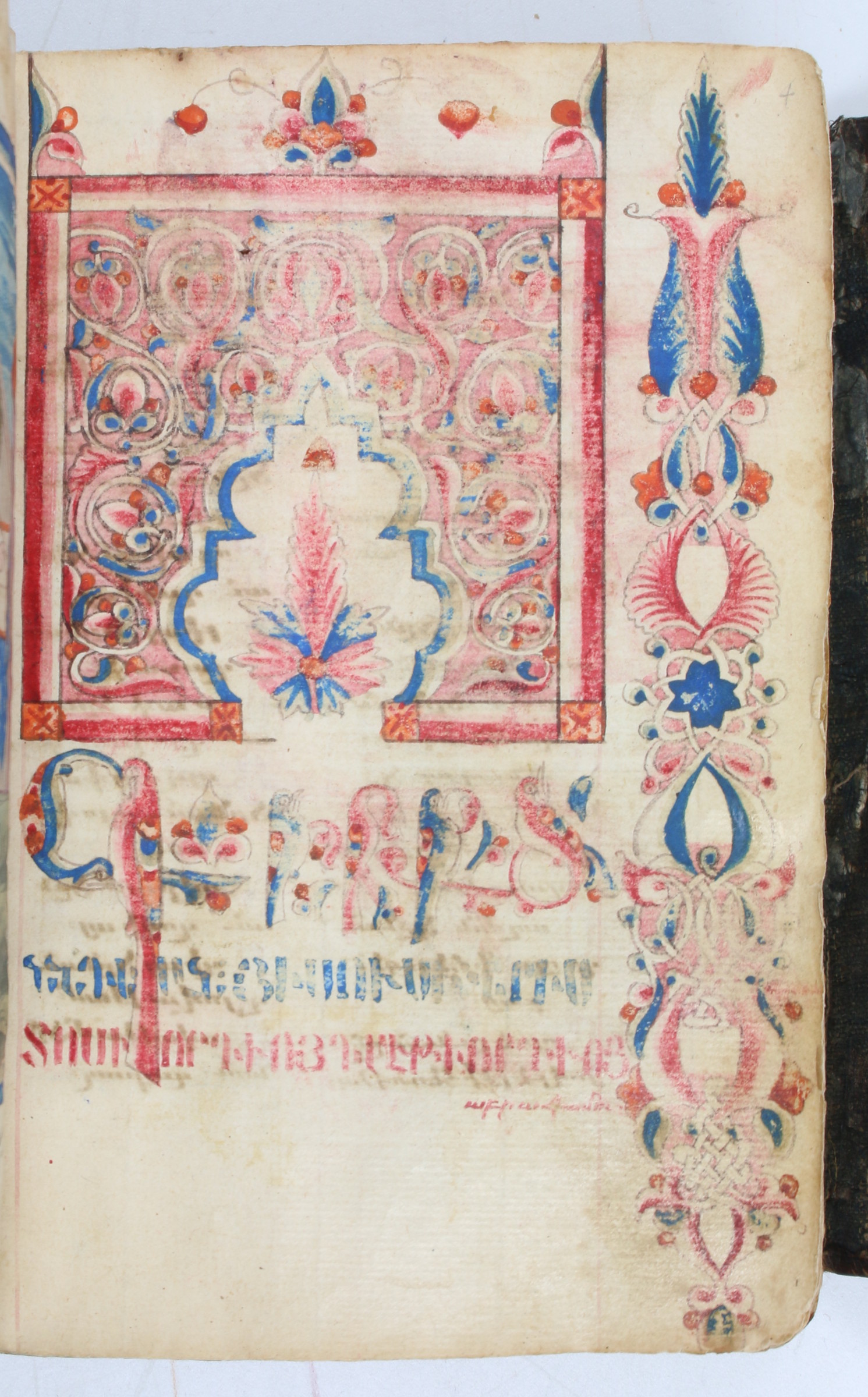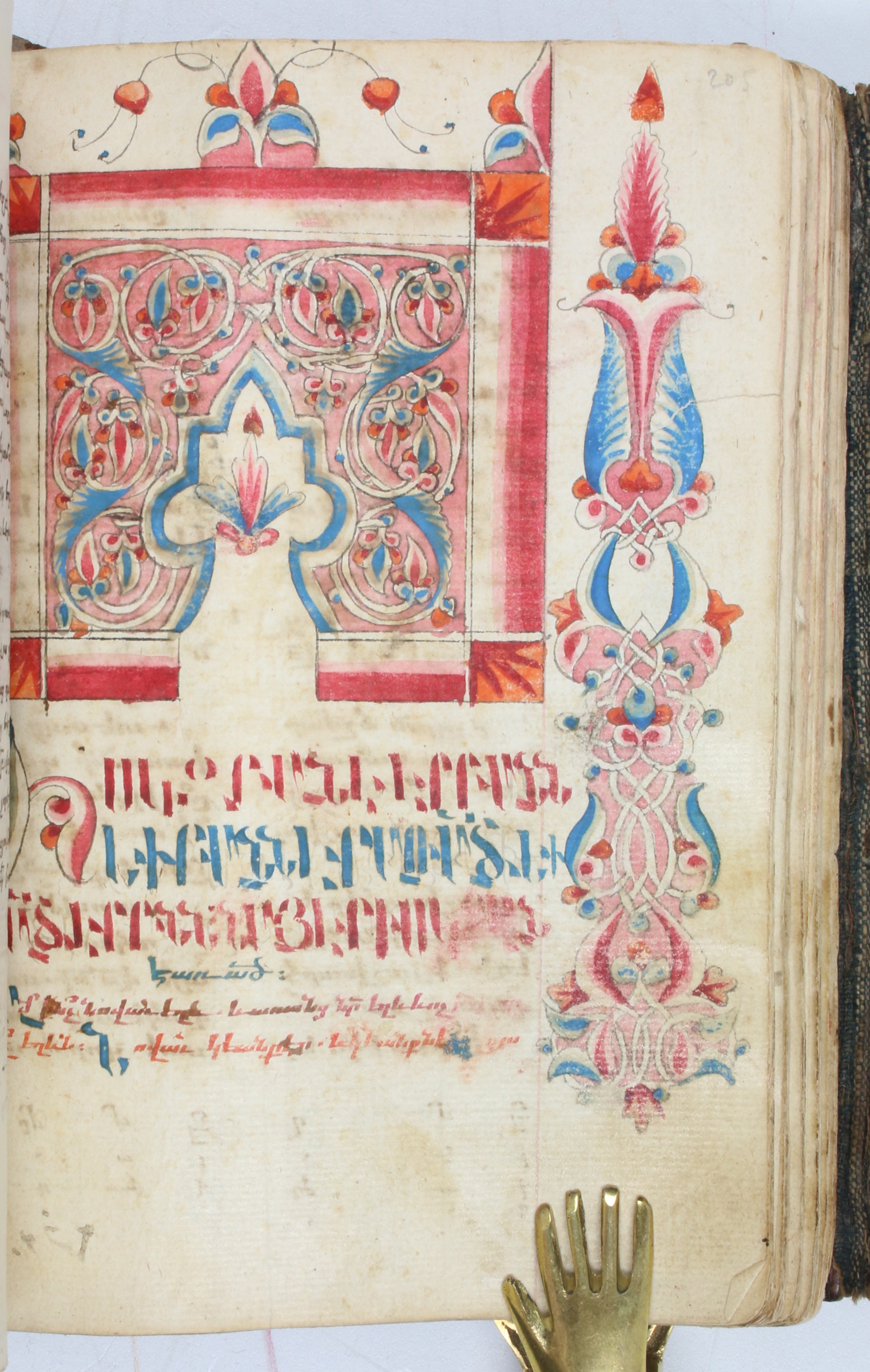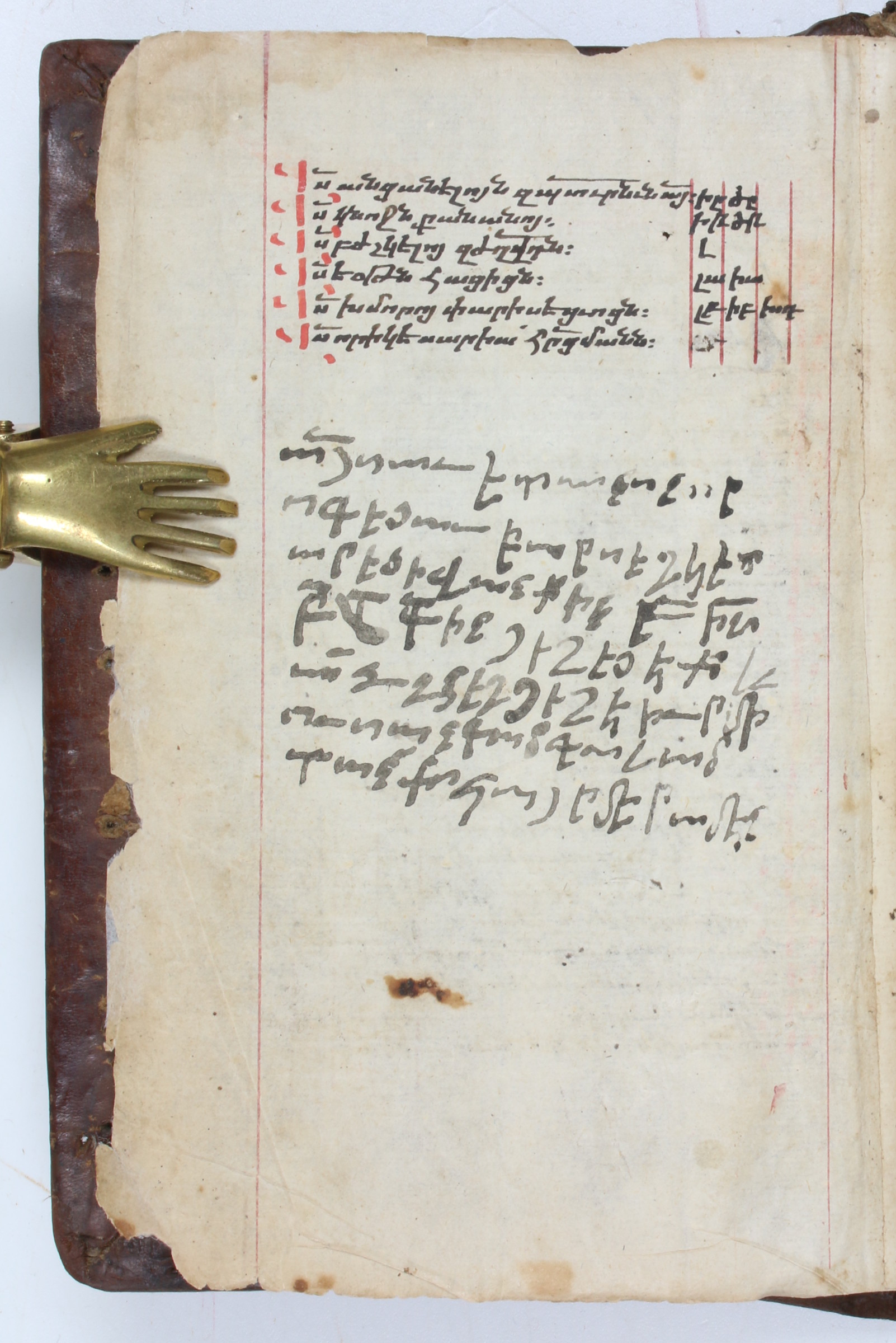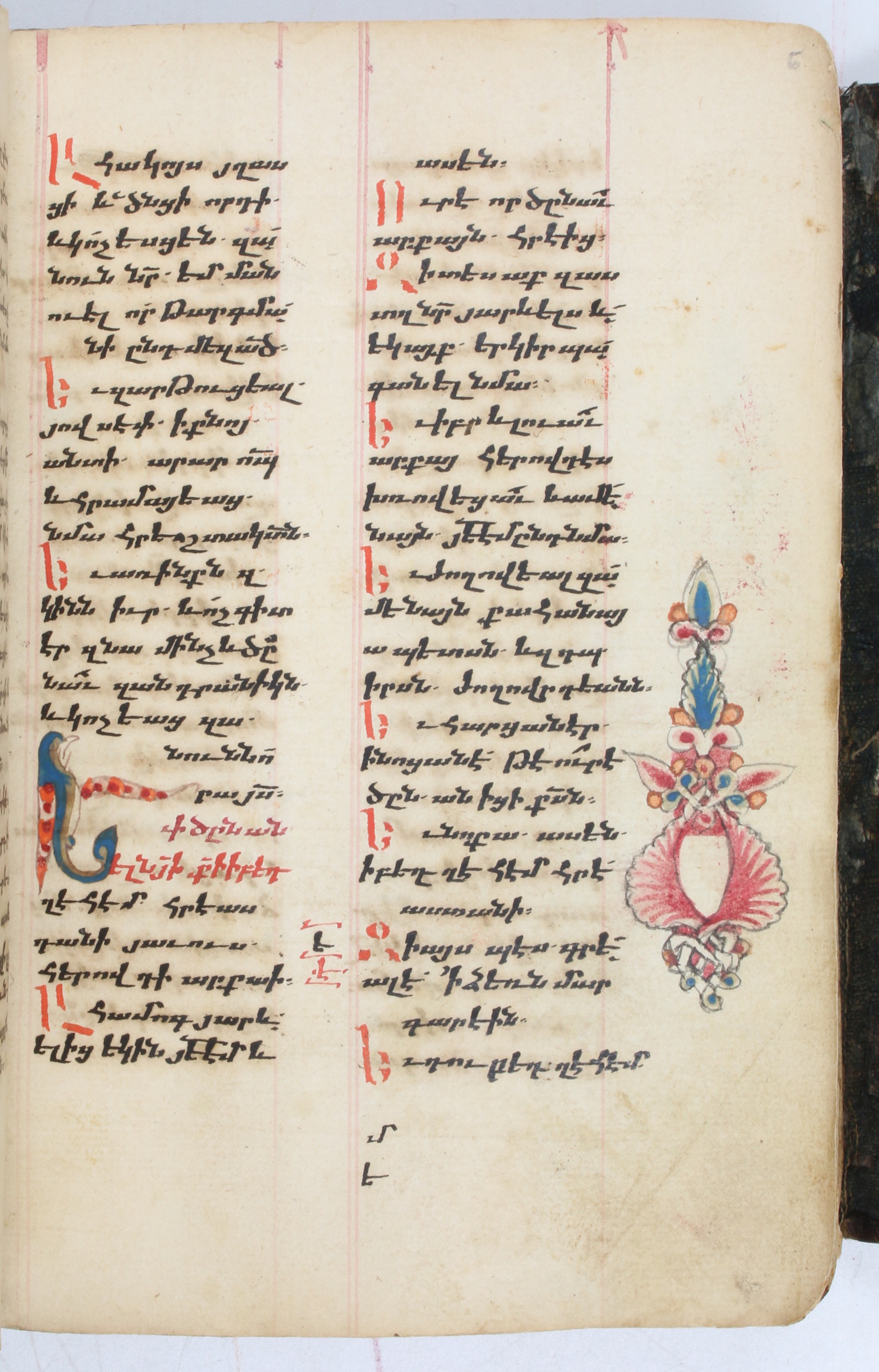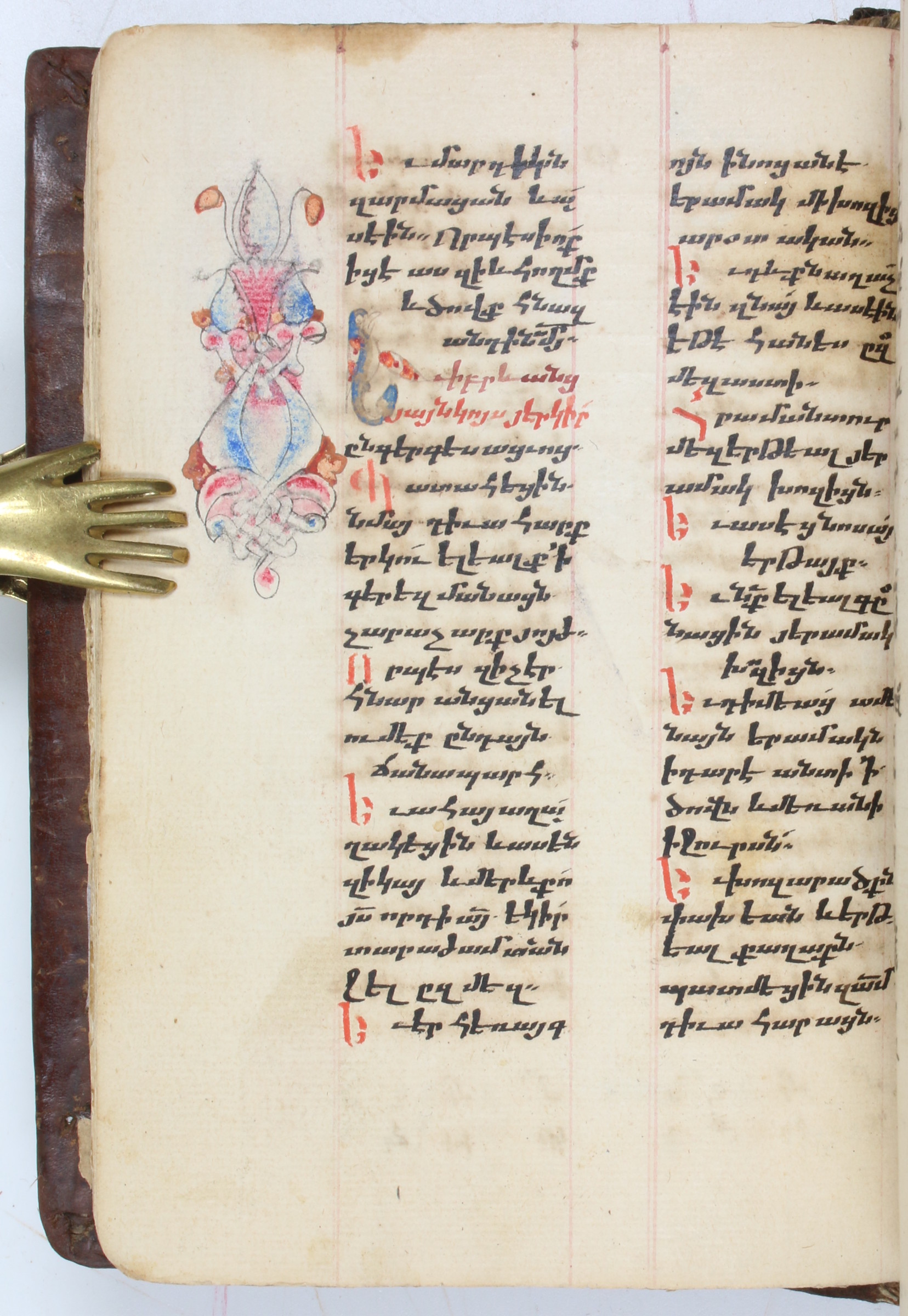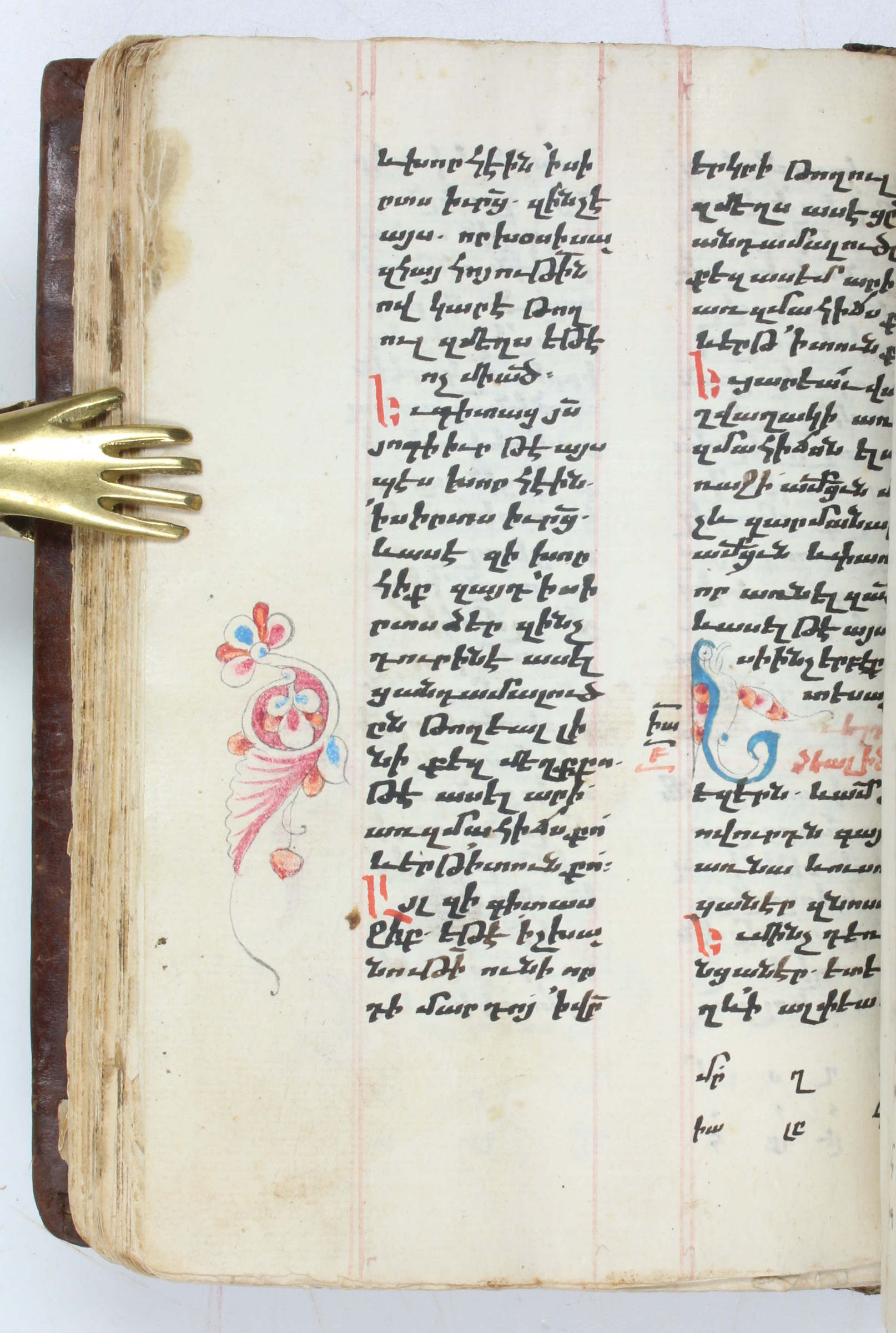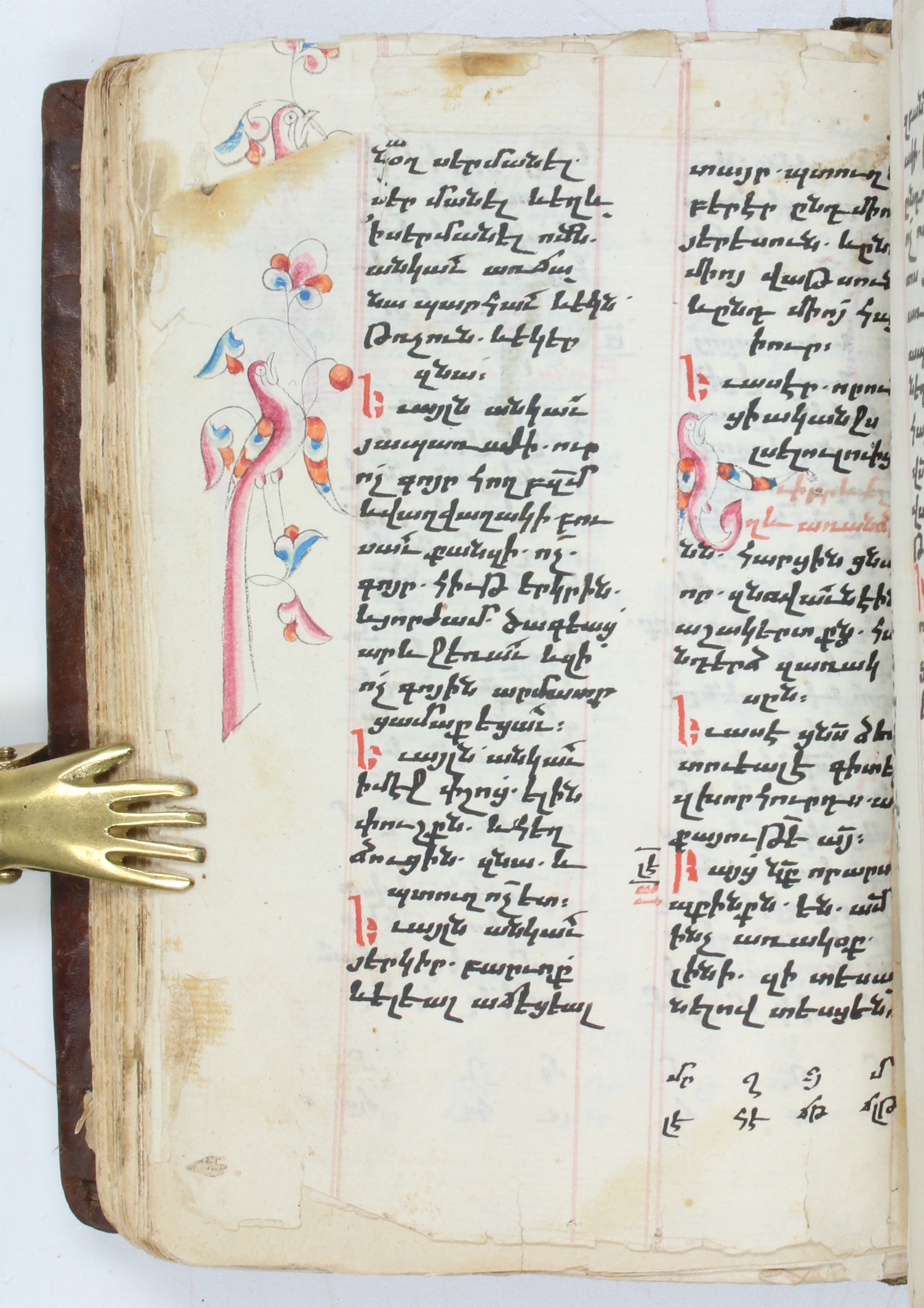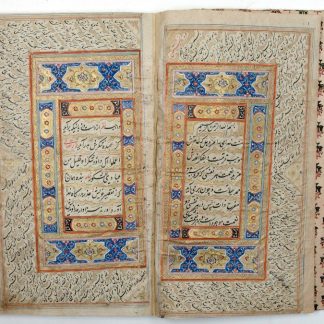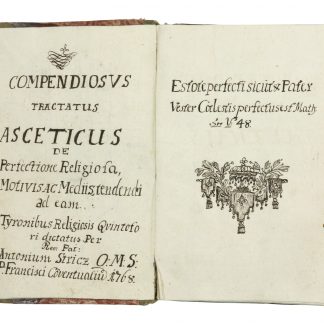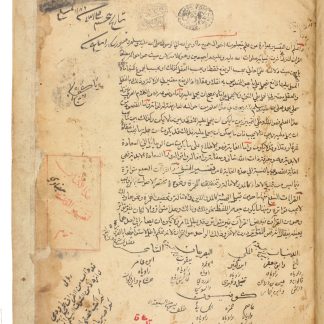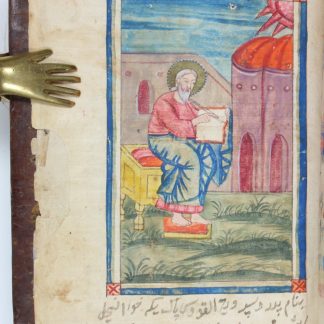Owned by an Armenian Christian living in Persia
Armenian Gospel Book.
8vo (120 x 162 mm). Armenian manuscript on polished laid paper. 261 leaves, 25 lines of Armenian calligraphy in black ink, 2 columns, capitals in red. With a full-page colour frontispiece illustration of an evangelist, 3 finely illuminated chapter heads, and numerous marginal illuminations, some in the form of birds. Later foliation in pencil. Contemporary full leather binding over wooden boards, lacking the metal applications formerly applied to the covers.
€ 75.000,00
Well preserved, uncommonly pretty Armenian Gospel manuscript with Persian provenance. The charming illumination is directly comparable to that of a religious manuscript in the National Library of Armenia, dated 1740 (Matenadaran 101, cf. Stone/Kouymjian/Lehmann, pp. 468f.). Although the style emerges as early as the 14th century and finds its full expression between the 15th and the 17th century (cf. ibid., nos. 109, 121, 157 and 167), the colour palette, the details of the marginal palmettes and also the type of paper used place our manuscript in the early 18th century.
The numerous bird-shaped initials contribute to the complexity and luxurious effect of the illuminations. In the lower margin of the frontispiece showing an Evangelist, apparently St Matthew, an invocation inscribed in Persian ("in the name of the Father, the Son and the Holy Spirit") suggests that the manuscript belonged to an Armenian from Iran. A Gospel Book in the collections of the Armenian Patriarchate in Istanbul shows the same arrangement of a painting of St Matthew illustrating the beginning of the text (APIP33).
A few edge tears, chips and other flaws with a few minor instances of loss (fols. 14, 82, etc.); occasional light stains. Binding rubbed; fore-edge flap professionally repaired. A semé of holes in the upper cover (as well as few additional holes in the lower cover) gives evidence of a once-elaborate decoration of metal bosses that has not survived.
Provenance: 20th century Parisian private collection, kept in the family for several generations and dispersed in 2022.
Cf. Michael E. Stone / Dickran Kouymjian / Henning Lehmann, Album of Armenian Paleography (Copenhagen, 2002), no. 176, pp. 468 ff.


